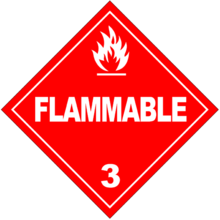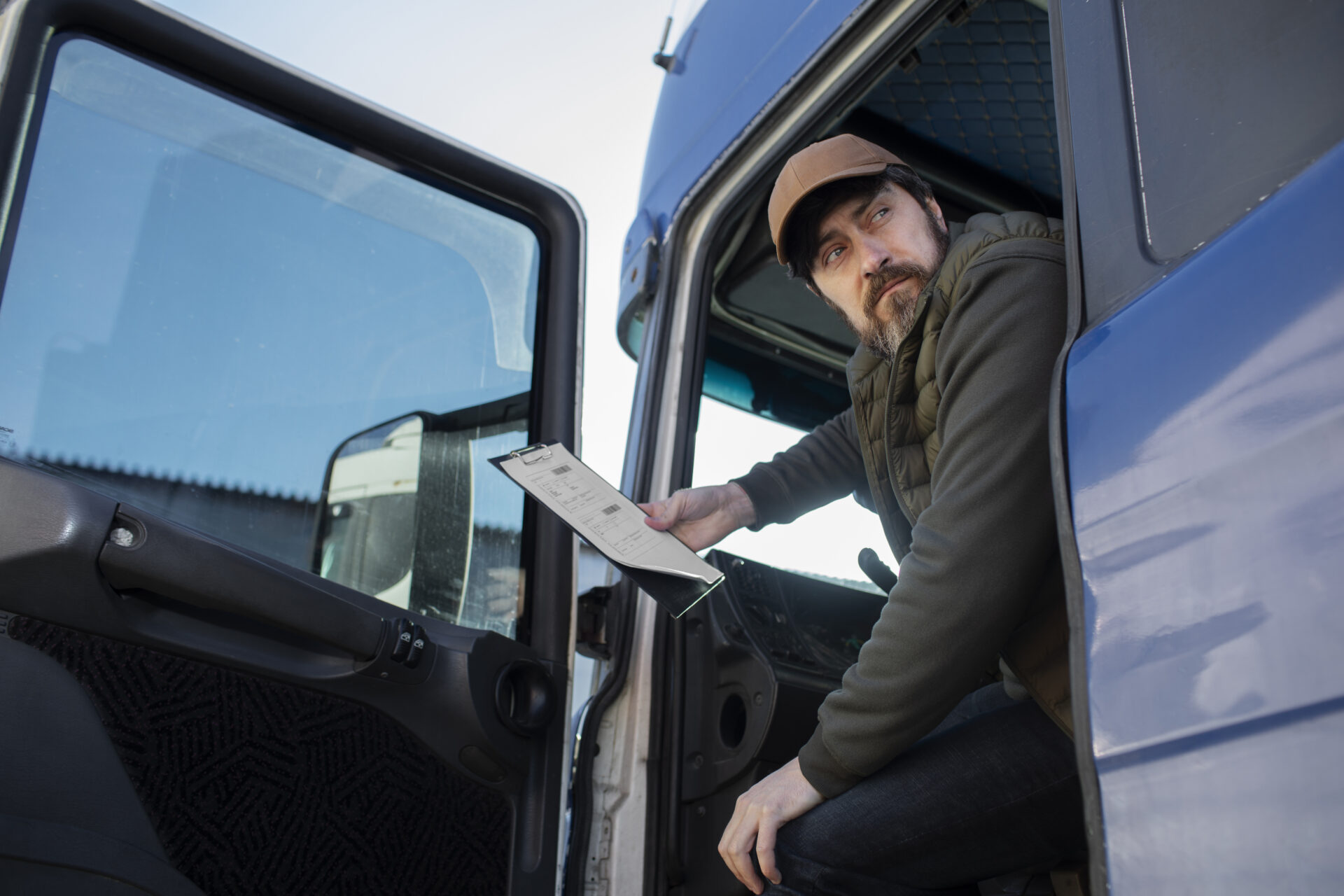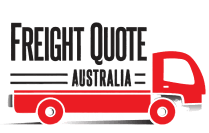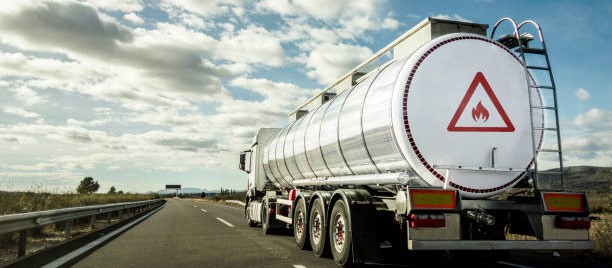Transporting flammable liquids in Australia is an essential activity in many industries, such as mining, manufacturing, and agriculture. Flammable liquids are substances that can easily catch fire and burn, posing a significant risk to human life and the environment if not transported safely. Following is a detailed summary of the main regulations and guidelines for how to transport flammable liquids in Australia.
What Are Flammable Liquids?
According to SafeWork NSW, one litre of flammable liquid – when fully evaporated – may produce 5,000 litres of an explosive vapour/air mix, enough to fill a small store room or garage.
Flammable liquids fall under Class 3 dangerous goods. They are substances that have a low flashpoint, which means they can ignite and burn easily at relatively low temperatures. Flashpoint is the temperature at which a liquid produces enough vapor to form an ignitable mixture with air. Some examples of flammable liquids include gasoline, diesel fuel, ethanol, acetone, kerosene, butane, propane, and paint thinners.
The hazards associated with flammable liquids depend on several factors, including the flashpoint, boiling point, vapor pressure, and chemical properties of the substance. For example, liquids with a low flashpoint, such as gasoline, can easily ignite and produce explosive vapors. Liquids with a high vapor pressure, such as propane, can quickly evaporate and form a flammable gas mixture.
Dangers of Leakage When Transporting Flammable Liquids
There are several dangers associated with flammable liquids leaking on a truck during transport. These dangers include:
- Fire and explosion risk: Flammable liquids are highly combustible and can ignite when exposed to heat or sparks. A leak can increase the risk of a fire or explosion if there is an ignition source nearby, such as a hot engine or electrical equipment.
- Inhalation hazards: Flammable liquids can release vapors that are harmful to inhale. If a leak occurs, these vapors can spread throughout the truck and pose a serious risk to any people in the vehicle.
- Environmental damage: Flammable liquids can be hazardous to the environment if they leak and contaminate soil or water. This can lead to environmental damage and may be expensive to clean up.
- Slipping hazards: A leak can create a slip and fall hazard for anyone who needs to access the truck. Additionally, coming into direct skin contact with these liquids may be dangerous.
Flammable Liquid Transportation Regulations and Requirements
Class 3 flammable liquids transportation is primarily regulated by the Australian Dangerous Goods Code (ADG Code), which outlines the requirements for the safe storage and transportation of dangerous goods, and The Australian Code for the Transport of Explosives by Road and Rail, which provides guidelines and regulations for transporting explosives and flammable liquids. As with the ADG Code, it aims to ensure the protection of people, property, and the environment during the transportation process. It also provides guidance on the classification of dangerous goods and the appropriate measures to be taken for their transport.

Below are the key requirements from the ADG Code for the safe transportation of flammable liquids in NSW:
- Classification and labelling: Flammable liquids must be classified according to the ACG Code standards, which consider factors such as flash point, boiling point, and viscosity. Once classified, the substance must be labelled with the appropriate hazard warning labels and placards, which are designed to inform transporters and emergency responders of the substance’s hazards.
- Packaging: Flammable liquids must be put in containers that are specifically designed and tested for the transportation of that liquid. For example, plastic containers should not be used for transporting gasoline because the liquid can degrade the plastic, potentially causing leaks. The containers must also be properly sealed, and gaskets should be used if necessary.
- Loading and securing: Proper loading and securing of flammable liquids is critical to preventing spills or leaks during transportation. Containers must be stacked in a way that ensures stability and prevents movement during transit. Place heavier containers at the bottom and lighter ones on top, ensuring they are balanced and well-distributed. They should also be properly secured with appropriate straps, restraints, or other securing devices.
- Documentation: All vehicles transporting flammable liquids must have proper documentation, including transport documentation and emergency response information. Flammable liquid transport documentation includes information such as the substance being transported, the quantity, the hazard classification, and the names and addresses of the consignor and consignee. Emergency response information needs to be readily accessible to the driver and emergency responders, and should include details of what to do in the event of a spill or other emergency.
- Driver training: All drivers transporting flammable liquids must be properly trained and certified to handle dangerous goods. This includes training on the properties of flammable liquids, the risks associated with transportation, and the proper procedures for handling emergencies. Drivers must also be trained on how to properly load, secure, and transport flammable liquids, as well as how to respond to emergencies. Personal protective equipment (PPE) such as eye, skin and respiratory protection should also be worn.
- Emergency response: An emergency response plan should outline the procedures for responding to emergencies such as spills, leaks, and fires. It should include information on the location of emergency response equipment, such as spill kits, and contact information for emergency responders.
The Chain of Responsibility law states that everyone involved in the supply chain is accountable for safety violations, no matter where they are or what their role is.
Best Practices for Transporting Flammable Liquids
In addition to these requirements, there are other best practices that businesses and individuals can follow to transport flammable liquids safely. For example:
- Choose the safest route: When transporting flammable liquids, it is important to choose the safest possible route. This may involve avoiding busy roads or areas with high fire risk. For example, if you’re transporting flammable liquids from Melbourne to Sydney, it’s worth noting the heavy congestion times on the Hume Highway so that you can plan to avoid it, if possible.
- Monitor the temperature: Flammable liquids can be sensitive to temperature changes. It is important to monitor the temperature of the substance during transportation to ensure that it remains within a safe range.
- Conduct regular inspections: Regular inspections of the containers and the vehicle can help identify any issues before they become a big problem. This includes checking for leaks or damage to the containers, as well as ensuring that the vehicle is still in good condition.

Regular inspections ensure that the transport vehicle is in good condition, Image Courtesy: Freepik.
In addition to adhering to federal regulations such as the ADG Code, check regulations specific to the state or territory you’re operating in.
Flammable Liquid Transport Companies in Australia
To ensure the safe transportation of flammable liquids, transport companies should follow best practices, adhere to the regulations and guidelines set out in the ADG Code, and keep up to date with any changes. This will significantly reduce the risk of incidents during transportation and ensure that any emergencies are responded to in the correct way. When looking for a dangerous goods transport company in Australia, ensure you choose one that complies with the regulations in place to avoid any future problems.
Need to Transport Class 3 Dangerous Goods in Australia?
There are strict limitations and guidelines to what, and how much of a dangerous material can be transported by a carrier, so be sure to declare the Dangerous Goods when requesting a quote online. Freight Quote Australia is able to arrange transport of most Dangerous Goods, however, we will require the UN number, Class, Packing Group, and Weight of the goods in order to quote and book your freight.
This information is general in nature and we accept no responsibility for consequences arising from the use or reliance on this article. If you need assistance transporting flammable liquids, please feel free to submit a Quote Request.

